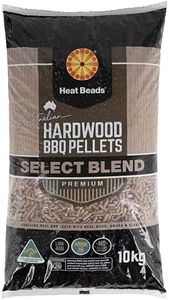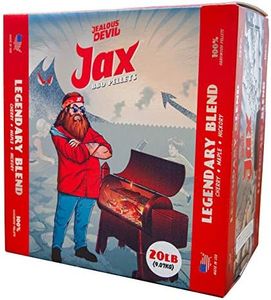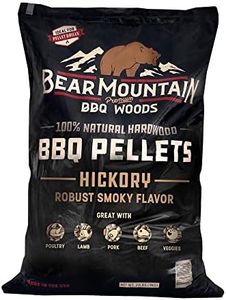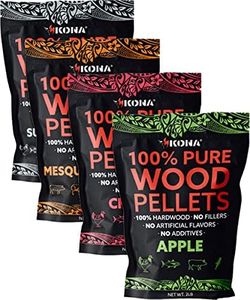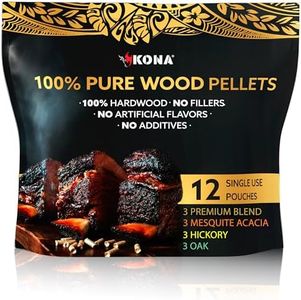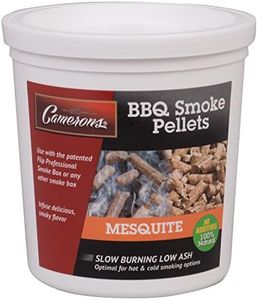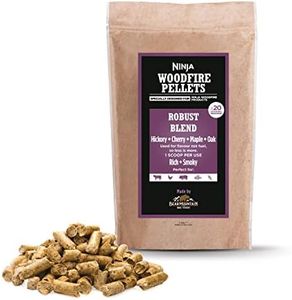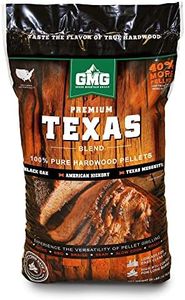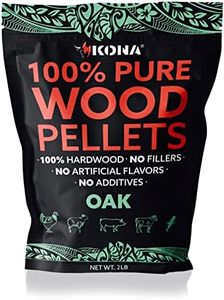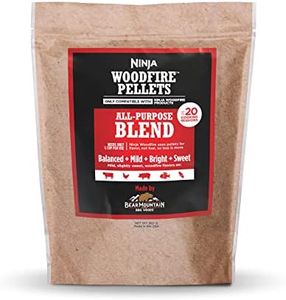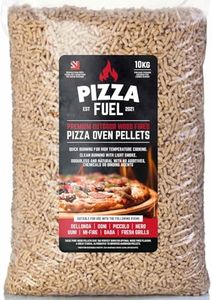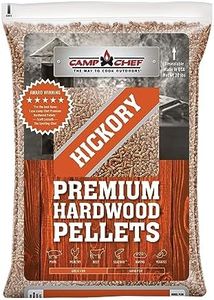We Use CookiesWe use cookies to enhance the security, performance,
functionality and for analytical and promotional activities. By continuing to browse this site you
are agreeing to our privacy policy
10 Best Wood Pellets
From leading brands and best sellers available on the web.Buying Guide for the Best Wood Pellets
Choosing the right wood pellets is important because the type and quality of pellets you buy will directly affect the efficiency, cleanliness, and convenience of your stove or grill. Start by understanding the needs of your burner — whether it’s for heating or cooking — and knowing that high-quality pellets can maximize heat output, reduce ash, and keep everything running smoothly. Always consider what your primary goal is: are you after high heat, clean burning, a specific flavor for cooking, or just ease of storage and handling?Wood TypeWood pellets are typically made from hardwood, softwood, or sometimes a blend. This refers to the type of wood used in the pellet. Hardwood pellets often burn a bit longer and are preferred for grilling due to subtle flavors, while softwood pellets tend to burn hotter, making them efficient for home heating needs. Blended pellets offer a balance between heat and flavor. Your choice should depend on whether you’re using the pellets for cooking (look for flavor and burn control) or heating (aim for higher heat output).
Ash ContentAsh content measures how much residue is left after burning the pellets. Low-ash pellets reduce the frequency of cleaning your stove or grill, making maintenance easier and ensuring smoother operation. Ash content is usually categorized as ‘low’, ‘medium’, or ‘high’. For most users, especially for heating and home stoves, low-ash content is preferred. If you want hassle-free operation and less cleanup, look for pellets labeled as premium or ultra-low ash.
Moisture ContentThis tells you how much water remains in the pellets. Low moisture content is crucial because it allows the pellets to burn efficiently and consistently, producing more heat and less smoke. Typical values range from under 6% (excellent) up to around 10%. Pellets with high moisture content tend to burn poorly, create more smoke, and can even clog up your equipment. Always choose pellets with low moisture for best results, especially if consistent heating is important to you.
Pellet Size and UniformityPellets come in standardized sizes, but you should still check that the pellets are uniform in size and shape. Consistent pellets feed more reliably through automatic hopper systems and burn evenly, reducing the risk of jams or uneven heat. If you have a specific brand of stove or grill, confirm the ideal pellet size from the manufacturer, and always check for even, unbroken pellets with minimal dust in the bag for hassle-free use.
Additives and PuritySome wood pellets are made with added binders or fillers, while others are 100% pure wood. Additive-free pellets generally burn cleaner and are better for both health and the environment. Pure pellets also leave less ash and residue, protecting your equipment. If your main goal is clean heating or safe cooking, specifically look for pellets labeled as ‘100% natural’ or ‘no additives’.
Flavor (for Grilling)If you are using pellets for grilling or smoking food, flavor becomes important. Different woods produce different smoke profiles—like hickory for a strong, smoky flavor, apple for sweetness, or maple for subtle notes. Your choice will depend entirely on the type of food you enjoy preparing. If experimenting, try out small quantities of various flavors to find what matches your taste preferences.
Storage and PackagingPellets should be stored in a dry place, as exposure to moisture can make them swell and crumble. Good-quality packaging keeps pellets dry during storage and transit. When buying, look for bags that are well-sealed and sturdy. If you use pellets seasonally or in varying quantities, consider packaging that is easy to reseal or buy in quantities that match your usage to minimize waste and spoilage.
